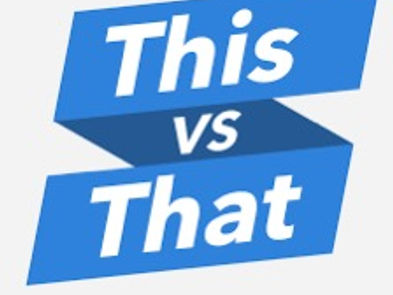top of page
Search


6 Common Mistakes with 있다 and 없다
There are 6 different mistakes that Korean learners make with 있다 and 없다
KSJ 쌤
Feb 282 min read
208 views
2 comments

(으)ㄹ 거예요 vs (으)ㄹ게요 | Will do vs Will do?
Athough, the are bot translated as “will”. CANNOT BE USED INTERCHANGEABLY.
KSJ 쌤
Dec 2, 20243 min read
345 views
5 comments


N/A/V -ㄴ/는/은/ㄹ/을 만큼 = As Much As | Practice Included
만큼 is a Korean particle used to indicate comparison or extent. It can express similarity, degree, or quantity. Translations: as much as,..
KSJ 쌤
Oct 30, 20244 min read
382 views
5 comments

뿐이다 vs 뿐만 아니라 = Only vs Not only A but also B
뿐 is used to indicate that something is just one thing, often in a negative way.
뿐만 아니라 means "not only... but also," used to connect ideas
KSJ 쌤
Oct 28, 20242 min read
187 views
5 comments

Mastering Hangul with Pronunciation Hacks
안녕하세요 여러분! I'm Vaibhavi from India. This blog post goes beyond the typical beginner's lesson and will introduce you to not just the...
Vaibhavi
Oct 3, 20243 min read
407 views
5 comments


어디 있어요? vs 어디예요?
did you know there is a difference between 어디 있어요? and 어디예요? This post will help you learn the difference and when to use them!
Vaibhavi
Sep 18, 20243 min read
964 views
5 comments


걱정되다 vs. 걱정하다 vs. 걱정이다: Which One Should You Use When You're Worried in Korean?
Korean learners often find themselves scratching their heads over the differences between 걱정되다, 걱정하다, and 걱정이다. But don't worry—I've got you
Vaibhavi
Sep 13, 20243 min read
765 views
6 comments


Hobbies in Korean -- 40+ Fun and Creative Hobbies
Let's start learning about hobbies in Korean! Types of sports, types of crafty hobbies, music-related hobbies, cooking, baking and more..
Vaibhavi
Sep 9, 20242 min read
513 views
4 comments

Nuances of Korean Past Tense: Understanding ~던 and ~았/었던 (1)
안녕하세요 여러분! I'm Vaibhavi from India. Before beginning this lesson, please review and understand the concept of (으)ㄴ/는 것 . To review and...
Vaibhavi
Aug 26, 20246 min read
347 views
4 comments


아니면 & 또는 Lesson
안녕하세요 여러분! Koreanstudyjunkie입니다~ There are several ways to say "or" in Korean. Today, I'll show you 2 different ways. 아니면 = Or, Either...
KSJ 쌤
Jul 29, 20242 min read
710 views
2 comments


N(이)나, V-거나 Lesson | How to say "Or" In Korean
(-이)나 is used to say "or" and can only be attached to nouns. It has a few different usages itself.
Form: consonant: ~나 vowel: ~이나
KSJ 쌤
Jul 24, 20242 min read
492 views
6 comments

~지/죠 Lesson
In Korean, ~지 and ~죠 are used to turn a statement into questions, basically to confirm information or to imply that the speaker expects..
Vaibhavi
Jul 12, 20242 min read
325 views
2 comments

이 vs 이거 vs 이것 | 이, 그, 저 Lesson
How to use 이, 이것, 그, 그것, and 저, 저것 properly. Also the differences of 여기,거기, and 저기.
KSJ 쌤
Jun 14, 20243 min read
1,355 views
3 comments


V-(으)세요 Lesson | How to say "please" in Korean
N/A/V-(으)세요 has several different usages, but the main usage is to give someone a polite command.
KSJ 쌤
Jun 12, 20242 min read
757 views
2 comments


에게/한테/께 Particle Lesson | To and From in Korean
에게/한테 means "to". Unlike 에, these 2 particles can only be used for living things. 한테 is used more in speaking..
KSJ 쌤
Jun 3, 20242 min read
4,289 views
3 comments


V-아/어/해 주다 Lesson
아/어/해 주다 is used to express doin an ction to benefit someone else. It often gets translated as "for". For me, for you, etc.
KSJ 쌤
May 27, 20243 min read
1,127 views
2 comments

Birds in Korean
A list of different birds: swans, turkeys, vultures, and more
Vaibhavi
May 17, 20244 min read
128 views
2 comments


V-는 데 걸리다/들다 = It costs.. to do Verb
This grammar can be used to say "how long it takes to do something" or "how much money it costs to do something"
KSJ 쌤
May 15, 20242 min read
439 views
2 comments


에 vs 으로 | What's the difference?
에 and 으로 can both mean "to" a location, but there IS a difference in when to use them. One is used to mark the destination and the other ...
KSJ 쌤
Apr 24, 20242 min read
1,130 views
3 comments
Blog: Blog2
bottom of page